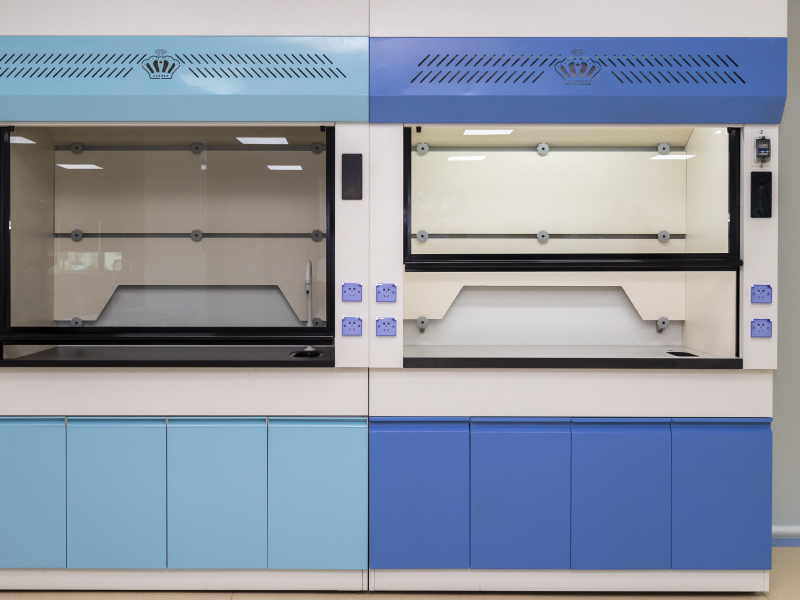Table of Contents
Setting up a new laboratory or upgrading existing facilities requires meticulous planning and execution. Proper lab equipment installation is crucial for ensuring accuracy, safety, and efficiency in your research or testing environment. This comprehensive guide provides a step-by-step setup checklist to help you navigate the complex process of installing and verifying your lab essentials.
Pre-Installation Planning
Before you begin the physical installation process, thorough planning is essential:
Assess Space and Infrastructure
- Measure available space
- Verify electrical capacity and outlets
- Check water supply and drainage systems
- Evaluate ventilation requirements
Create an Equipment Inventory
- List all equipment to be installed
- Verify compatibility with existing systems
- Confirm all necessary components are on hand
Review Manufacturer Guidelines
- Obtain and study installation manuals
- Note any special requirements or precautions
Coordinate with Stakeholders
- Schedule installation times with minimal disruption
- Arrange for specialized technicians if needed
- Inform safety officers and facility managers
The Lab Equipment Installation Checklist
Prepare the Space
- Clear the area of any obstacles or debris
- Clean and sanitize the installation space
- Mark utility connection points (electrical, water, gas)
- Ensure proper lighting for installation work
Unpack and Inspect Equipment
- Carefully unbox each piece of equipment
- Check for any shipping damage or missing parts
- Verify serial numbers against shipping documents
- Organize components for easy access during installation
Position Equipment
- Place heavy equipment first, using proper lifting techniques
- Align equipment according to lab layout plans
- Ensure proper spacing for ventilation and access
- Level each piece of equipment as required
Connect Utilities
- Install any necessary surge protectors or voltage regulators
- Connect electrical power, verifying correct voltage and amperage
- Attach water lines, checking for leaks
- Connect gas lines, testing for proper pressure and flow
- Install ventilation ducts or fume hoods as needed
Software and Networking
- Install required software and drivers
- Configure network settings and connectivity
- Set up data backup systems
- Ensure cybersecurity measures are in place
Calibration and Testing
- Follow manufacturer’s calibration procedures
- Run initial test cycles to verify functionality
- Check for any error messages or unusual behavior
- Document all calibration results and settings
Safety Checks
- Verify all safety features are operational
- Install and test emergency shut-off systems
- Ensure proper grounding of electrical equipment
- Check for any potential hazards (sharp edges, pinch points)
Documentation and Training
- Compile all manuals and installation records
- Create standard operating procedures (SOPs) for each piece of equipment
- Schedule training sessions for lab personnel
- Set up a maintenance log and schedule
Post-Installation Considerations
After completing your lab equipment installation, consider these important steps:
Performance Monitoring
- Implement a system for tracking equipment performance
- Schedule regular maintenance checks
User Feedback
- Gather input from lab users on equipment functionality
- Address any concerns or suggestions promptly
Continuous Improvement
- Stay informed about software updates and firmware upgrades
- Consider periodic assessments for potential equipment upgrades
Compliance and Certification
- Ensure all installations meet relevant regulatory standards
- Schedule any necessary inspections or certifications
Troubleshooting Common Installation Issues
Equipment Not Powering On
- Check power connections and circuit breakers
- Verify voltage settings match your local power supply
Calibration Failures
- Ensure the environment meets specified conditions (temperature, humidity)
- Check for interference from nearby equipment
Network Connectivity Issues
- Verify IP settings and firewall configurations
- Test network cables and connections
Unexpected Error Messages
- Consult the equipment manual for error code explanations
- Contact manufacturer support for persistent issues
Conclusion
Proper lab equipment installation is a critical foundation for successful research and testing. By following this comprehensive setup checklist, you can ensure that your lab essentials are installed correctly, function optimally, and meet all safety and regulatory requirements. Remember, thorough planning, careful execution, and ongoing maintenance are key to creating a productive and reliable laboratory environment.
Whether you’re setting up a new lab or upgrading existing facilities, this guide will help you navigate the complexities of equipment installation with confidence. By paying attention to each step in the process, you’ll create a solid foundation for your scientific endeavors and maximize the potential of your laboratory investments.




